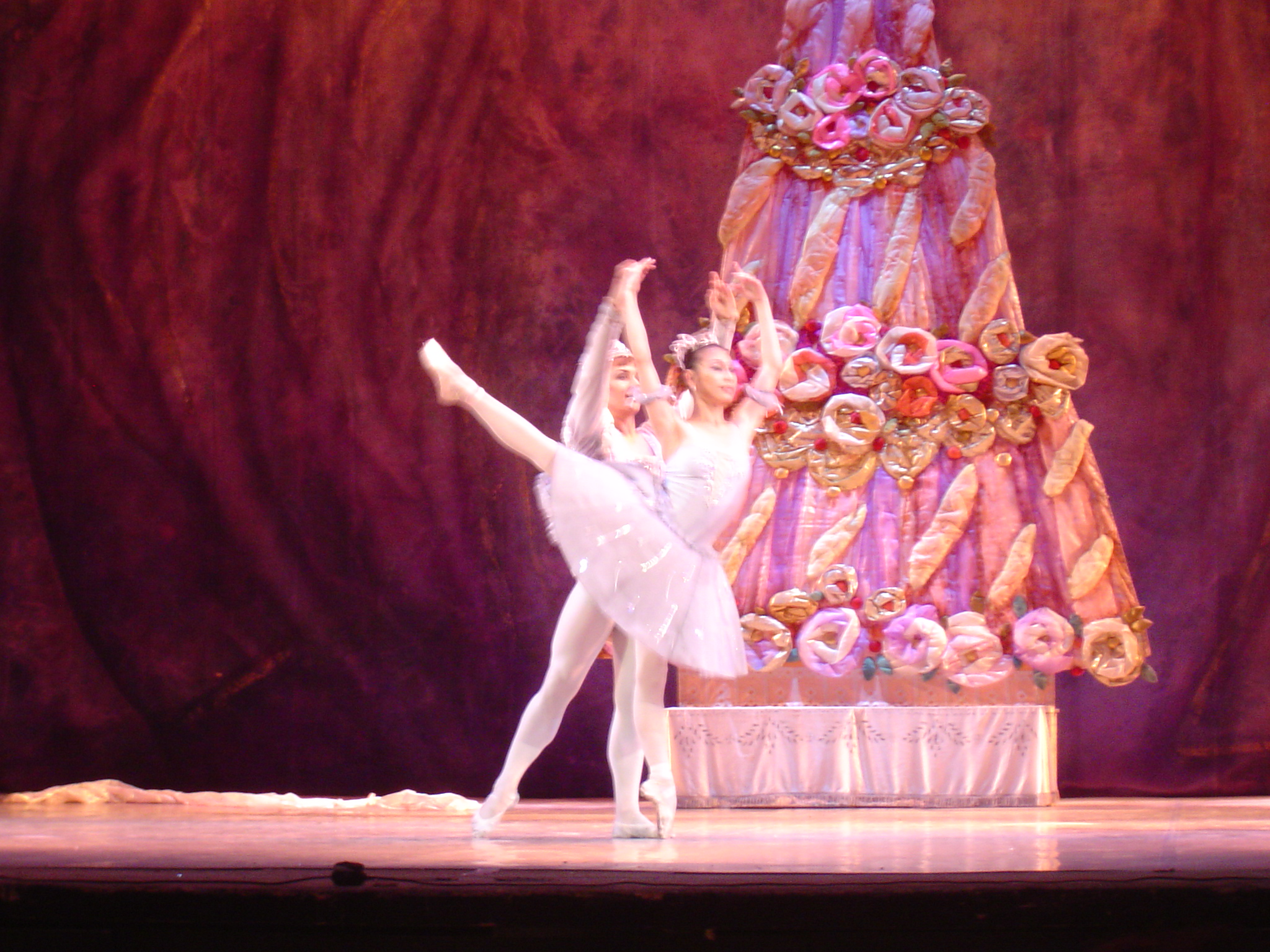The Nutcracker is an annual institution for many ballet companies and audiences, productions reliably returning every December. Since the 1930s, it has been adapted by countless national ballets, companies, and dance schools, gradually rising to its Christmas-time popularity. Many who grew up taking ballet classes took part in their own Nutcracker performances, the ballet now inseparable from the excitement of childhood Christmas memories.
The Nutcracker is based on a story by Alexandre Dumas, The Story of the Nutcracker (1844), which in turn is based on a German story by E.T.A. Hoffmann (1816). In the ballet, Clara receives a nutcracker for Christmas. At night, she sees him and an army of gingerbread soldiers battle the mouse king. After defeating the Mouse King with Clara’s help, the Nutcracker turns into a handsome prince. He takes her through a snowy forest to his Kingdom, the Land of Sweets, where sweets from all over the world dance for Clara. A more in-depth synopsis can be found on the webpages of the Scottish Ballet.
Key differences between book and ballet are an unexplained name change – Clara is called Marie in the book – and backstories. Ballet adaptations usually simplify their fairy tales, otherwise the ballet would take days. The initial story encourages children to get along: Clara and her brother fight at first but then work together to defeat the Mouse King (with seven heads, in the German original).
The book also explains how the Nutcracker himself came to be: he is her Godfather’s cousin, cursed to nutcracker-shaped ugliness when his efforts to free an ungrateful princess from the very same curse. She herself was cursed by the Mouse Queen as revenge on her father.
The music to the ballet is written by Pyotr Illych Tchaikovsky, commissioned by the Russian Imperial Theatre alongside the opera Iolanta. Its first performance choreographed by Marius Petipa initially received mixed reviews in 1892.
Still, reinterpretations of the Nutcracker by other choreographers build on his original choreography. In 1954, George Balanchine, highly influential choreographer and founder of the New York City Ballet, reworked the Nutcracker, showing on stage the Nutcracker’s transformation into a human. In 1972, the founder of the Scottish Ballet Peter Darrell developed his own version.
The Scottish Ballet now performs an adapted version of Darrell’s ballet. Director Christopher Hampson made press by updating the ballet’s second act opener, the Divertissement/Land of Sweets. The ballet usually shows chocolate from Spain, coffee from Arabia, tea from China, and candy canes from Russia. “Sets and costumes, as fantastic as they were, were designed 40 years ago”, explains Hampson in an interview in 2014, highlighting that Darrell, too, kept updating his show. New York City’s ballet, too, changed the costuming in response to a campaign led by dancers Georgina Pazcoguin and Phil Chan.
For anyone looking for some Christmas watching, a 2011 performance of Balanchine’s Nutcracker by the New York City Ballet and a 2018 performance after Petipa by the Ballet of the National Opera of Ukraine are available to all students at the University of Edinburgh through the university’s collections.
“Pyotr Ilyich Tchaikovsky’s ‘The Nutcracker’ ballet (Sankt-Peterburg)” by scalleja is licensed under CC BY-SA 2.0.

